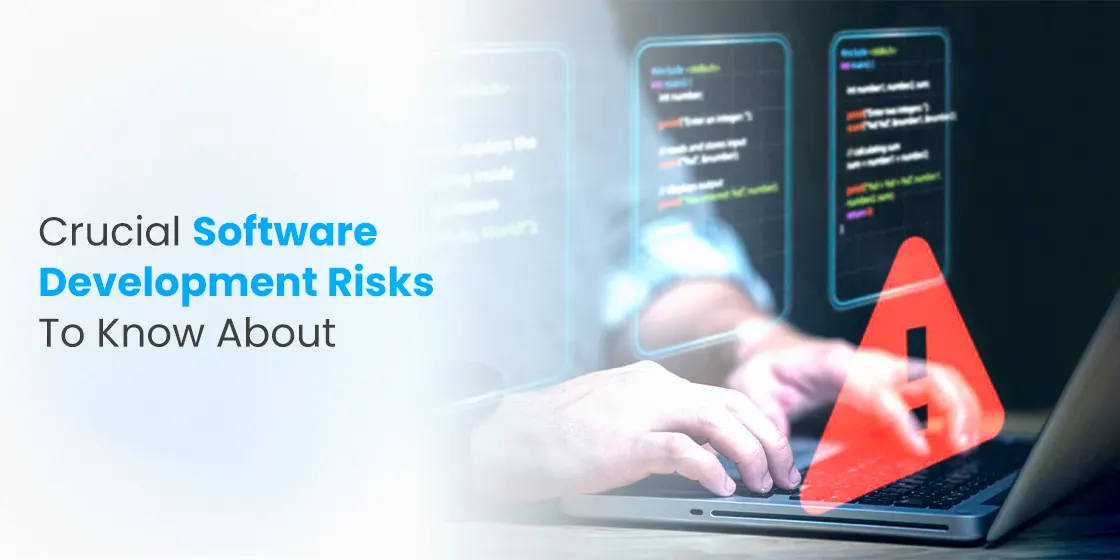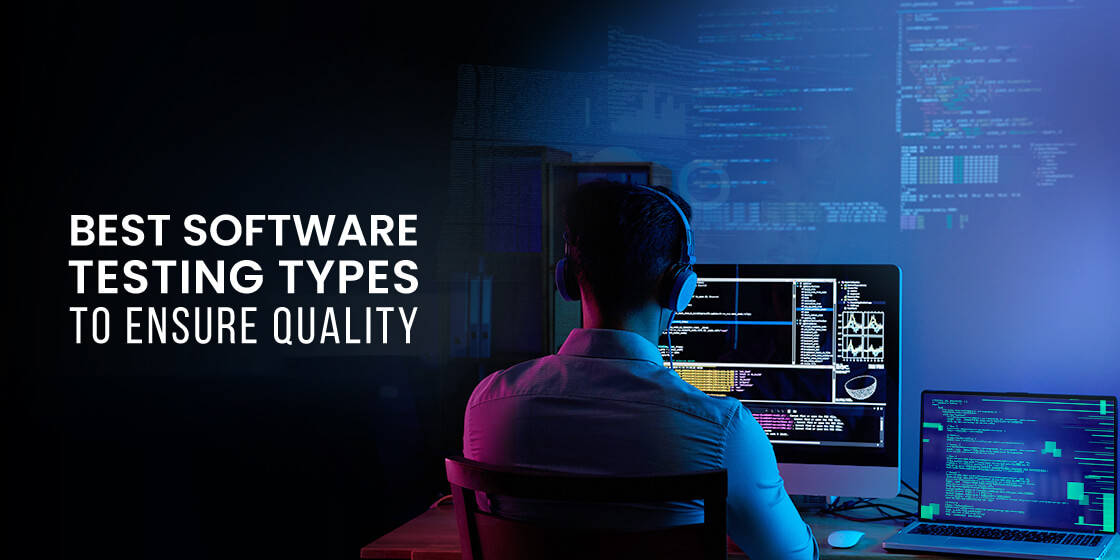Table of Content
Learn How to Mitigate Different Types of Risks in Software Development
Software development is a dynamic and complex process. It involves various stages such as planning, designing, coding, testing, deployment, and maintenance. Because of its complexity, the process is vulnerable to many uncertainties. These uncertainties are known as risks. Risks are potential problems that could affect the success of a software project.
No matter how well a project is planned, risks can never be entirely eliminated. They can occur due to various reasons such as changing requirements, tight deadlines, lack of communication, or technical failures. Some risks are predictable while others arise unexpectedly. In both cases, if they are not managed properly, they can cause delays, cost overruns, or even total project failure.
Understanding these risks is crucial for teams offering software development services. When risks are identified early, they can be addressed before they become serious issues. This article explores the concept of software development risks, explains why managing them is important, and describes the key types of risks that development teams need to be aware of and actively manage throughout the software lifecycle.
What are Software Development Risks?

Software development risks refer to any uncertain events or conditions that can negatively impact the success of a project. These can affect the timeline, budget, quality, or scope of the project. Risks may stem from various areas such as technology, operations, people, external factors, or business strategy.
There are two main categories of risks: internal and external. Internal risks originate within the organization. These might include lack of skilled personnel, miscommunication, or unrealistic deadlines. External risks come from outside the organization, such as regulatory changes, shifts in market demand, or new competitors.
Identifying risks involves examining each part of the project to determine where problems might occur. These risks are then analyzed to understand their likelihood and potential impact. Based on this analysis, SaaS development teams can prioritize risks and develop strategies to avoid or reduce them. Examples include developing fallback plans, allocating extra time and resources, or using more stable technologies.
Importance of Risk Management in Software Development

Risk management is the process of identifying, analyzing, prioritizing, and responding to risks. In software development, this process helps ensure that projects are delivered on time, within budget, and with the expected quality.
Without proper risk management, small problems can grow into major failures. Teams may miss deadlines, go over budget, or release products that do not meet user expectations. Poorly managed risks can also damage a company’s reputation and reduce customer trust.
Managing risks improves decision-making. It allows project managers to plan for the unexpected and make informed choices. It also helps teams stay flexible and adapt to changes more effectively. When risks are managed well, stakeholders feel more confident in the project, and the chances of success increase significantly.
Critical Software Development Risks to Manage

Risk management is most effective when teams are aware of the types of risks they might face. Below are the key categories of software development risks, each of which requires careful attention and management strategies.
Operational Risks
Operational risks are related to the people, processes, and tools involved in software development. These risks often arise due to poor project management or communication failures.
Examples:
- Unclear project goals and functional requirements
- Inefficient workflow or lack of standard processes
- Inadequate project documentation
- Misalignment between teams or departments
- High turnover of team members
- Miscommunication between developers, testers, and stakeholders
Operational risks can lead to project delays, low productivity, and inconsistent quality. To minimize these risks, it is essential to define clear roles and responsibilities, establish efficient workflows, and maintain regular communication among all team members. Agile methodologies and daily stand-up meetings are also useful tools for managing operational risks.
Technical Risks
Technical risks arise from challenges related to software design, architecture, tools, or technology used in the project. These risks can be difficult to detect until later stages of development.
Examples:
- Using immature or unproven technology
- Poor system architecture design
- Lack of scalability or flexibility in the system
- Incompatibility between system components
- Insufficient performance under high load
- Delays caused by technical complexity
To address technical risks, it is vital to conduct thorough research before choosing technologies. Developing proof-of-concept models, doing pilot testing, and conducting regular code reviews can also help identify and resolve technical issues early in the project.
Budget Risks
Budget risks involve financial uncertainties that can affect the overall success of a project. If a project exceeds its budget, it may be delayed, reduced in scope, or canceled.
Examples:
- Underestimating development costs
- Unexpected expenses such as licensing fees or hardware needs
- Changes in project scope without budget adjustments
- Unplanned overtime or hiring additional staff
- Delays that increase labor and operational costs
Managing budget risks requires accurate cost estimation, regular financial tracking, and proper change control procedures. Teams should prepare contingency budgets and review financial reports frequently to ensure the project stays within budget.
Security Risks
Security risks are one of the most critical concerns in rapid application development. A single security breach can lead to data loss, legal issues, and damage to the company’s reputation.
Examples:
- Insecure code or poor coding practices
- Lack of proper authentication and authorization mechanisms
- Exposure to malware or phishing attacks
- Use of third-party components with known vulnerabilities
- Failure to comply with data protection regulations
To reduce security risks, developers should follow secure coding standards, use up-to-date security tools, and conduct regular security audits. It is also essential to educate team members about security best practices and ensure that all third-party libraries and APIs are thoroughly vetted.
Post-deployment Risks
Post-deployment risks refer to problems that arise after the software has been released to users. These can damage the product’s reputation and require costly fixes.
Examples:
- Performance issues in the live environment
- Software crashes or unexpected bugs
- Poor user adoption or dissatisfaction
- Difficulty in rolling out updates or patches
- Negative feedback affecting product image
To manage post-deployment risks, it is important to have strong monitoring tools in place. Feedback collection, user behavior analysis, and crash reporting can help identify issues quickly. Teams should also prepare rollback plans and have customer support ready to respond to problems as they occur.
Fuel innovation by leveraging bespoke software solutions. Get in touch with our team of experts to build cutting-edge software products.
Get a QuoteAdditional Risk Factors to Consider
In addition to the main categories, several other factors can introduce risks to a software development project. These include:
Legal and Compliance Risks
These arise when a software product fails to comply with legal or industry regulations. This is especially relevant in industries like finance, healthcare, or education. Failing to meet standards such as GDPR, HIPAA, or PCI-DSS can result in penalties and legal action.
Market Risks
Market risks involve the possibility that the software product may not meet user needs or gain enough traction. This could be due to incorrect market analysis, rapid changes in user preferences, or emerging competition.
Environmental Risks
Environmental risks refer to external events that can impact the project, such as natural disasters, political changes, or economic downturns. While these are harder to predict, having business continuity and disaster recovery plans helps mitigate their impact.
Frequently Asked Questions
| What are software development risks? Software development risks are potential issues that can negatively impact a project’s success. These risks may arise from internal factors like poor planning or external factors like changing market demands. |
| What are technical risks in software development? Technical risks in software development are challenges related to technology. These risks can affect performance, scalability, and the overall success of the project. |
| What are security risks in software development? Security risks in software development are threats that can expose systems to data breaches, unauthorized access, or cyberattacks. They often result from weak coding practices, vulnerable third-party tools, or lack of proper security measures. |
Final Words
Software development is a high-risk process. Risks can come from many areas—technical, operational, financial, or external. If not managed properly, these risks can lead to project delays, increased costs, reduced quality, or complete failure. However, by recognizing the potential risks early, teams can prepare and respond effectively.
Risk management is not a one-time task. It is a continuous process that should be integrated into every phase of development. From planning and design to deployment and maintenance, teams must stay alert and adaptable. Using strategies like regular assessments, contingency planning, and effective communication can significantly reduce the impact of risks.
Ultimately, managing risks leads to better project outcomes. It improves team coordination, builds trust with stakeholders, and increases the chances of delivering high-quality software. In today’s fast-paced tech world, mastering risk management is essential for success in software development.
Empower your digital initiatives with BariTechSol, a premier custom software development company. Our skilled team tailors cutting-edge solutions to your unique needs. Elevate your tech experience and stay ahead in the digital realm. Partner with BaritechSol and code the success of your next big idea.


